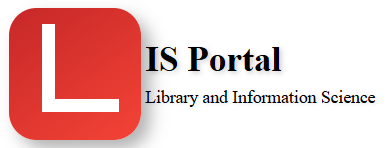Advt. No. 01/2024
| SI. No. |
Topics |
Weightage in % |
| 1 |
- Types of Libraries – Academic, Public and Special.
- Library Legislation and Library Acts in Indian States; The Press and Registration of Books Act.
- Laws of Library Science.
- Professional Associations – National – ILA, IASLIC, IATLIS; International – IFLA, ALA, CILIP, ASLIB, SLA; Role of UGC, RRRLF and UNESCO in Promotion and Development of Libraries.
- Library and Information Science Education in India.
- Library Extension Activities.
- Trends in Library and Information Science.
|
5 |
| 2 |
- Data, Information, Knowledge and Wisdom.
- Information Life Cycle – Generation, Collection, Storage and Dissemination.
- Information Science – Relationship with other subjects, Information Society and Knowledge Society.
- Communication — Concept, Types, Theories, Models, Channels and Barriers; Trends in Scholarly communication.
- IPR and Legal Issues – Categories, Conventions, Treaties, Laws.
- Right to Information Act (RTI); Information Technology Act.
- National Knowledge Commission; National Mission on Libraries.
|
5 |
| 3 |
- Information Literacy – Areas, Standards, Types and Models; Trends in Information Literacy.
- Information Sources – Nature, Characteristics, Types and Formats.
- Sources of Information – Primary, Secondary and Tertiary; Documentary and Non-Documentary.
- Reference Sources – Bibliographical, Biographical, Educational, Language and Geographical.
- Electronic Information Resources – Subject Gateways, Web Portals, Bulletin Boards, Discussion Forums/Group.
- Databases: Bibliographic, Numeric, Full text, Multimedia; Open Access Databases.
- Evaluation of Reference Sources and Web Resources.
- Search and Discovery Services.
- Library Resource Sharing and Library Consortia — National and International.
- National Information Systems and Networks: NISCAIR, DESIDOC, SENDOC, ENVIS, INFLIBNET, DELNET, NICNET, ERNET, National Knowledge Network (NKN), Biotechnology Information System Network.
- International Information Systems and Networks: AGRIS, INSPEC, MEDLARS, BIOSIS, ERIC, Patent Information System (PIS), Biotechnology Information System (BIS).
|
15 |
| 4 |
- Type of Users – User Studies, User Education.
- Community Information Services.
- Reference Service — Concept and Types; Referral Services.
- Alerting Services – CAS, SDI, Inter Library Loan and Document Delivery.
- Mobile based Library Services and Tools — Mobile OPAC, Mobile Databases, Mobile Library Website, Library Apps, Mobile Library Instructions, Augmented Reality, SMS Alerts, Geo-Location, Reference Enquiry.
- Web 2.0 and 3.0 – Library 2.0- Concept, Characteristics, Components; Instant Messaging, RSS Feeds, Podcasts, Vodcasts, Ask a Librarian.
- Collaborative Services- Social Networks, Academics Social Networks, Social Tagging, Social Bookmarking.
|
10 |
| 5 |
- Universe of Knowledge – Nature and Attributes; Modes of Formation of Subjects.
- Knowledge Organisation – Classification -Theories, Canons, and Principles; Simple Knowledge Organisation System (SKOS), Taxonomies, Folksonomy, Trends in Classification.
- Mapping of Subjects in Library Classification Schemes — DDC, UDC and CC.
- Knowledge Organisation: Cataloguing – Canons and Principles; Centralized and Co-operative Catalogue; Library Cataloguing Codes: CCC and AACR – II.
- Standards of Bibliographic Record Formats and Description — ISBD, MARC 21, CCF, RDA, FRBR, Bibframe.
- Standards for Bibliographic Information Interchange & Communication – ISO 2709, Z39.50, 239.71.
- Metadata Standards: Dublin Core; MARC21, METS, MODES, EAD.
- Indexing Systems and Techniques: Assigned – Pre-coordinate; Post-Coordinate; Derived- Title-based; Vocabulary Control.
- Abstracting — Types and Guidelines.
- Information Retrieval System — Features, Components, Models and Evaluation.
- Ontology — Tools (RDF, RDFS, Protege).
|
15 |
| 6 |
- Computer Technology – Character Representation (ASCII, ISCII, Unicode); Computer Hardware, Software; Storage Devices; Input and Output Devices.
- Types of Software – System Software, Application Software.
- Telecommunication – Transmission Channels, Mode, and Media, ISDN, PSDN.
- Computer Networks – Topologies, Types of Networks — LAN, MAN, WAN.
- Internet – Web browsers, WWW, E-mail; Search Engines, Meta and Entity Search engines.
- Internet Protocols and Standards — HTTP, FTP, SMTP, TCP/IP, URI, URL.
- Hypertext, Hypermedia, Multimedia, Video conferencing, Virtual Reality.
- Cloud Computing.
- Semantic Web, Linked Data, Big Data, Data Mining, Data Harvesting.
|
10 |
| 7 |
- Library Automation — Areas, Planning, Selection of Hardware and Software, Implementation and Evaluation; Standards for Library Automation.
- Barcode, RFID, QR Code, Biometric, Smartcard: Features and Applications.
- Digitization — Planning, Selection of Materials, Hardware, Software, Process, Issues.
- Digital Library: Genesis, Characteristics, Types, Architecture; Standards, Formats and Protocols, DOI.
- Digital Preservation – Need, Purpose, Standards, Methods, Techniques, Projects (National and International).
- Digital Library Initiatives — National and International.
- Institutional Repositories – Need, Purpose, Types and Tools; Institutional Repositories in India; ROAR, DOAR, SHERPA-ROMEO.
- Content Management Systems — Architecture, Data Integration, CMS Software — Selection, Implementation and Evaluation.
|
15 |
| 8 |
- Research
- Types of Research – Basic and Applied, Interdisciplinary and Multidisciplinary.
- Research Methods: Historical, Descriptive, Experimental and Delphi.
- Research Design – Selection of Research Problem, Review of Literature; Formulation of Research Problem; Hypothesis- Formulation, Types and Testing; Sampling Techniques.
- Methods of Data Collection.
- Data Analysis and Interpretation.
- Plagiarism: Concept and Types.
- Statistical Packages – Spreadsheet, SPSS, Bibexcel, ‘IV Statistics.
- Research Report Writing and Citation Tools – Structure, Style, Contents, Guidelines; Style Manuals; Online Citation Tools; Reference Management Tools; Evaluation of Research Report.
- Metric Studies in LIS – Bibliometrics, Scientometric, Webometrics, Altmetrics; Impact Factors – Journal, h-Index, g-Index, i10 Index.
- Trends in Library and Information Science Research.
|
15 |
| 9 |
General Aptitude / Awareness/Knowledge about INFLIBNET |
10 |
